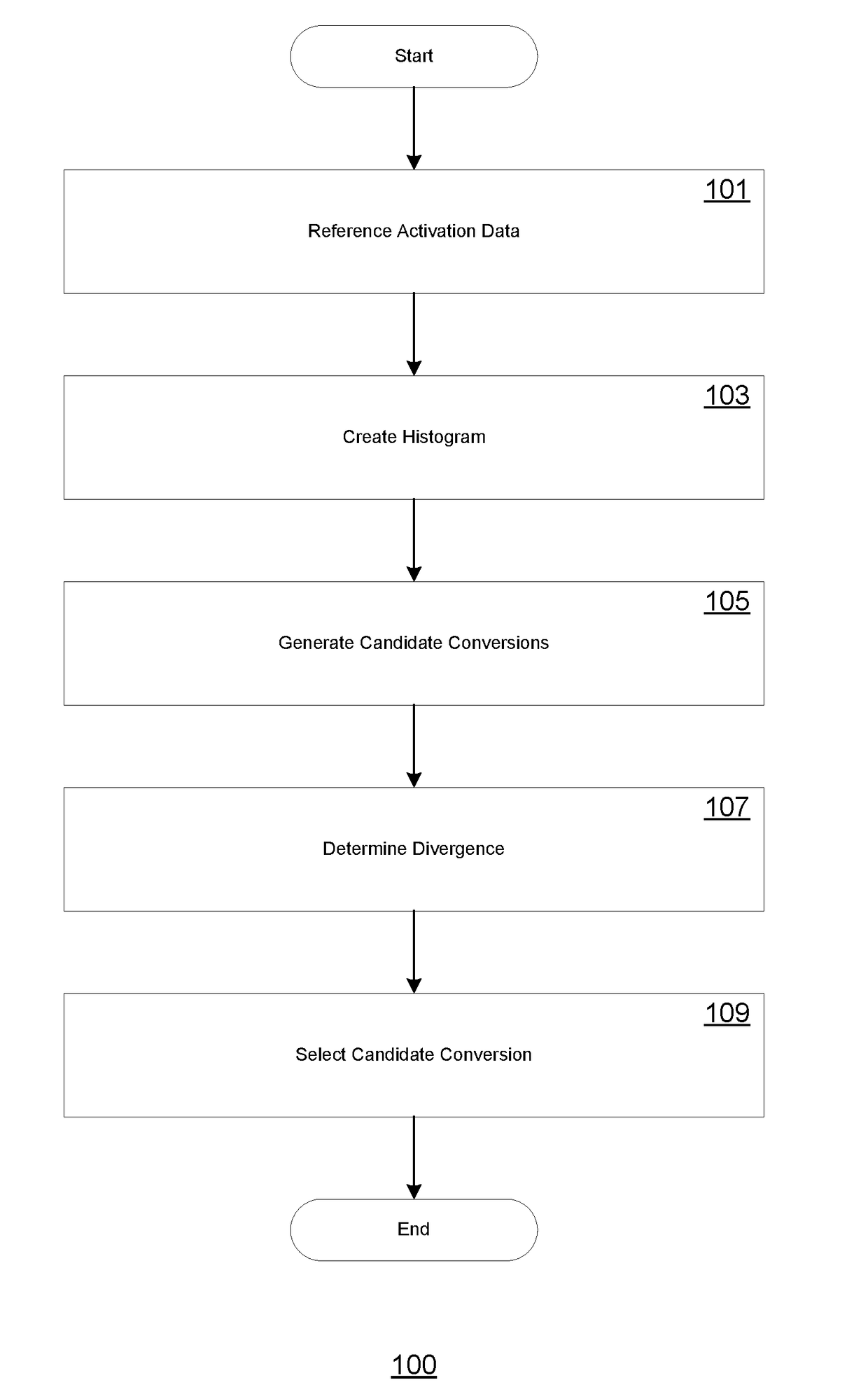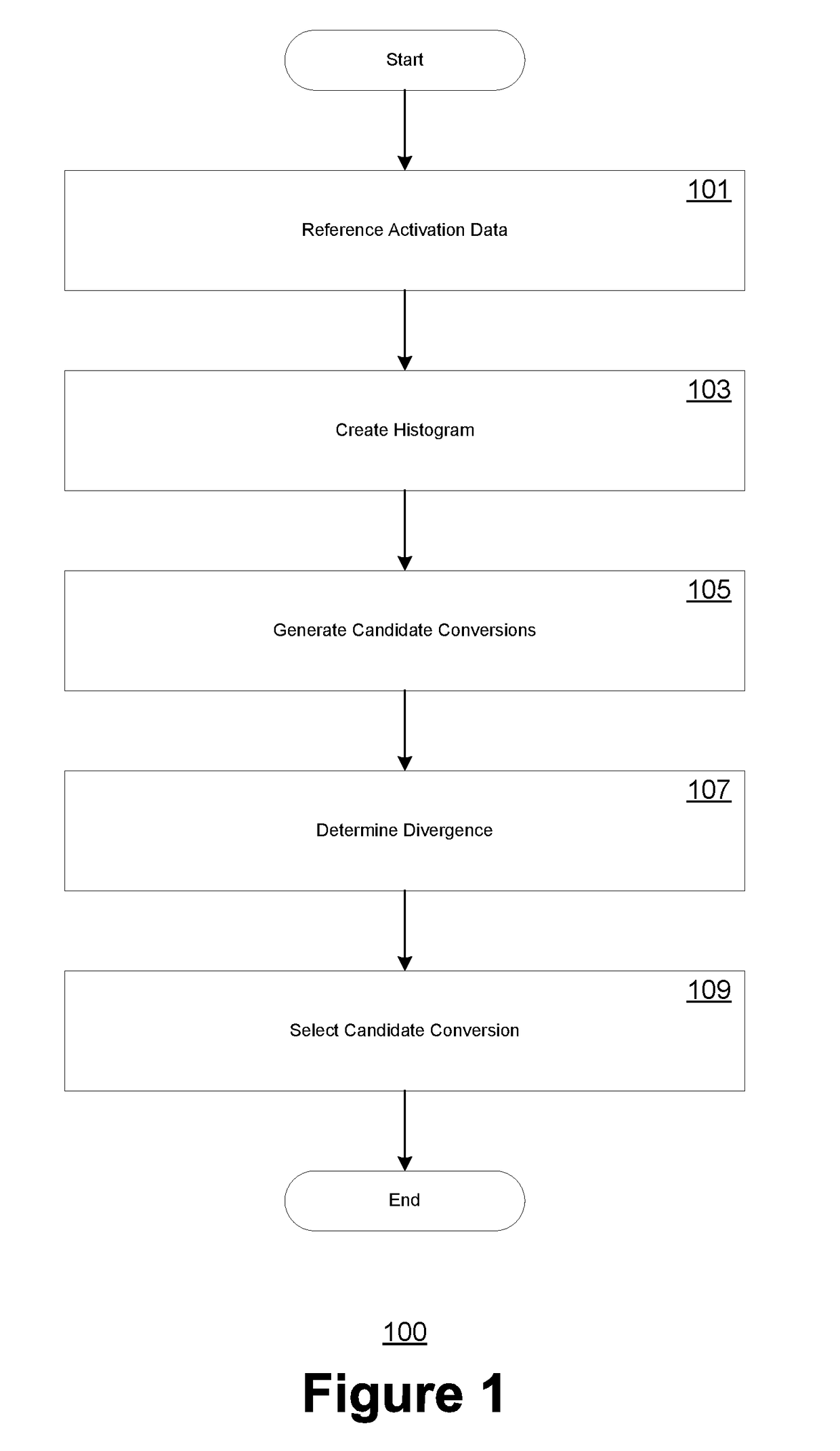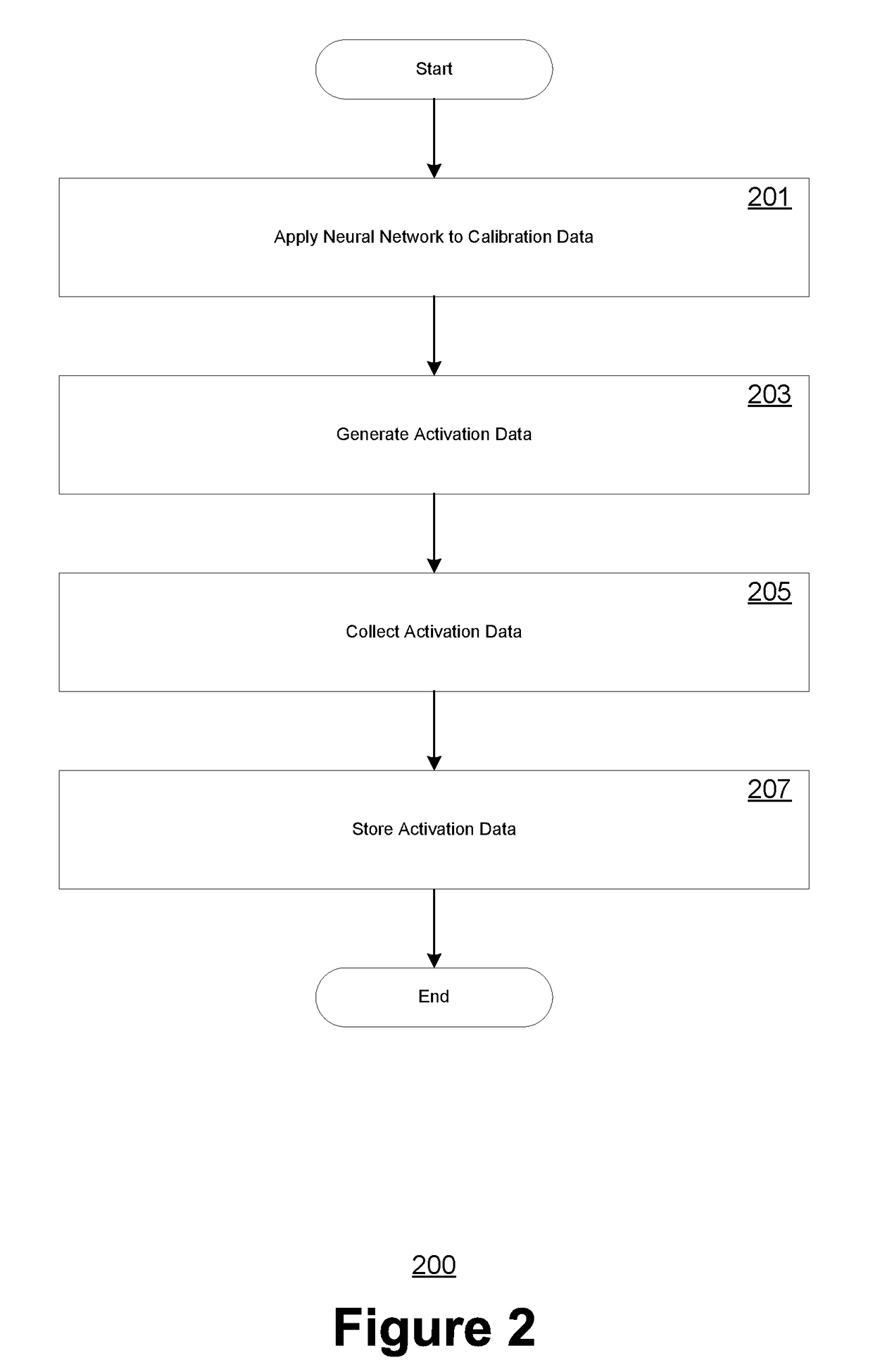Automated methods for conversions to a lower precision data format
a data format and data compression technology, applied in the field of computerimplemented techniques for data compression and information recoding, can solve the problems of reducing data precision numbers with a significantly narrow numerical range, requiring considerable memory and processing resources, and requiring significant memory storage and computation of 32-bit values, so as to eliminate extra processing requirements
- Summary
- Abstract
- Description
- Claims
- Application Information
AI Technical Summary
Benefits of technology
Problems solved by technology
Method used
Image
Examples
example
[0038]
input distribution: [5 5 4 0 2 4 7 3 1 4 6 0 3 2 1 3], size: 16 binsstarting i: 8quantizing input distribution into 4 binsBEGIN ITERATION, i= 8Q is built out of first 8 bins: [5 5 4 0 2 4 7 3]building Qlinspace, edges of the quantized bins [ 0. 2. 4. 6. 8.]indices of the bins after quantization [0 0 1 1 2 2 3 3]after excluding empty bins (−1): [ 0 0 1 −1 2 2 3 3]total counts in the quantized bins (merge) [ 10. 4. 6. 10.]counts in the quantized bins, normalizing before expanding [ 5. 4. 3. 5.]expanded bins [ 5. 5. 4. 0. 3. 3. 5. 5.]expanded bins normalized (sum == 1) [ 0.16666667 0.16666667 0.13333333 0.0.1 0.1 0.16666667 0.16666667]building Preference_density P [5 5 4 0 2 4 7 3]reference_density P, after adding outliers [ 5 5 4 0 2 4 7 23]reference_density P, normalized (sum=1) [ 0.1 0.1 0.08 0. 0.04 0.08 0.14 0.46]final Q [ 0.16666667 0.16666667 0.13333333 0. 0.1 0.1 0.16666667 0.16666667]final P [ 0.1 0.1 0.08 0. 0.04 0.08 0.14 0.46]now we compute divergenceEND ITERATION 8...
PUM
 Login to View More
Login to View More Abstract
Description
Claims
Application Information
 Login to View More
Login to View More - R&D
- Intellectual Property
- Life Sciences
- Materials
- Tech Scout
- Unparalleled Data Quality
- Higher Quality Content
- 60% Fewer Hallucinations
Browse by: Latest US Patents, China's latest patents, Technical Efficacy Thesaurus, Application Domain, Technology Topic, Popular Technical Reports.
© 2025 PatSnap. All rights reserved.Legal|Privacy policy|Modern Slavery Act Transparency Statement|Sitemap|About US| Contact US: help@patsnap.com



